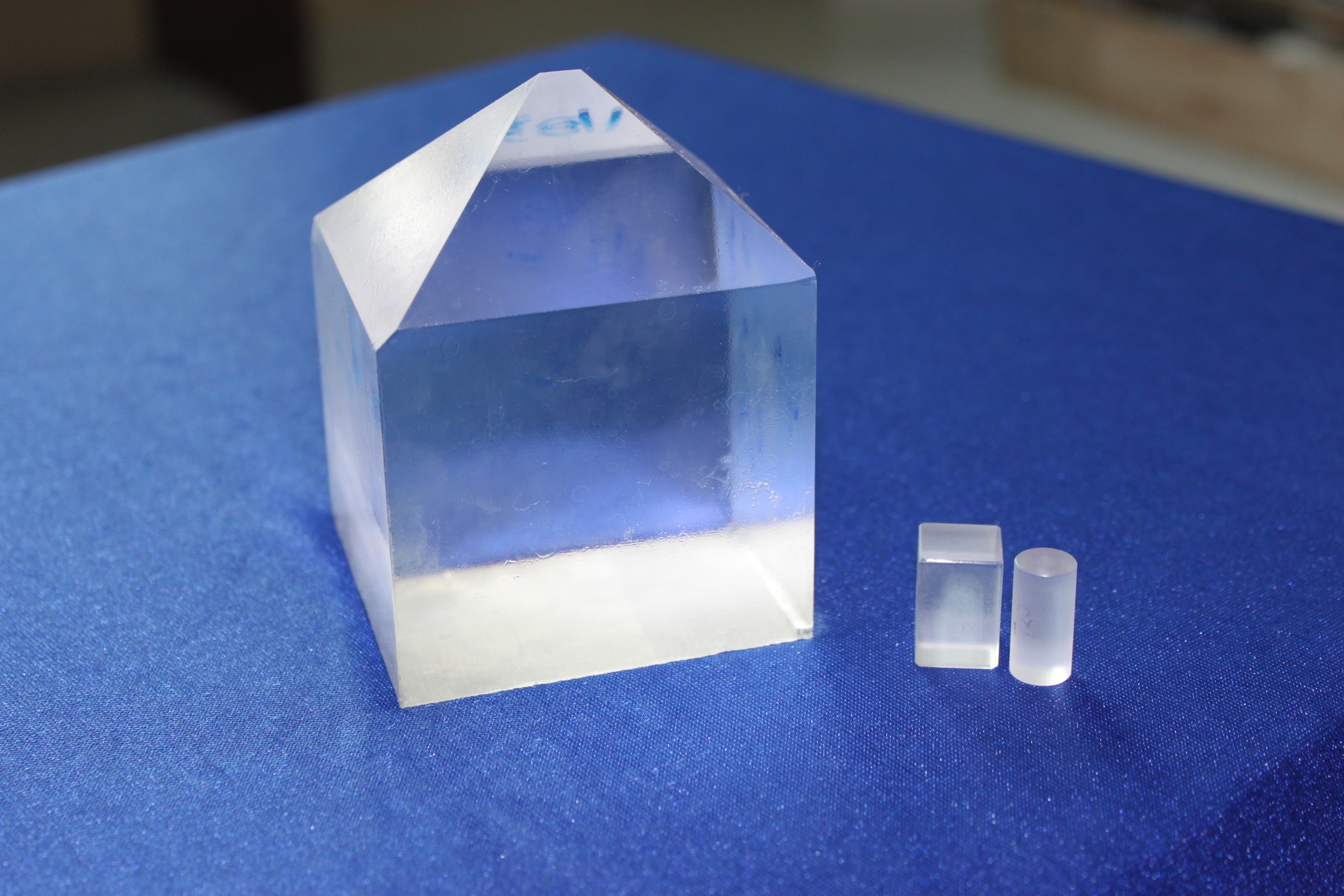MEASUREMENT TECHNIQUE
The measurement technique consists primarily of a measurement of the variation of the angle of deviation with temperature. The crystals to be measured were 60-60-60° prisms approximately 15 mm on a side. They were attached to a temperature-controlled mount in a vacuum chamber. The temperature could be varied by varying the temperature of a liquid bath above the mount. Temperature was measured by thermocouples attached above and below the crystal. The crystal temperature was assumed to be the average of the two temperatures. This appears to be a good approximation since the variation between the thermocouple readings above and below the crystal was typically of the order of 1PC. A low pressure Hg lamp and a He-Ne laser were used as spectral line sources. Polarized radiation could be obtained by placing a Glan prism between the spectral source and the prism. Since the variation of the angle of minimum deviation is quite small, the variation as a function of temperature was measured for each line separately. Typically, the crystal would be oriented at the angle of minimum deviation for a given spectral line while the crystal was at room temperature. After the angle of minimum deviation at room temperature was measured, the crystal would then be heated and allowed to come to thermal equilibrium. The variation of the angle of deviation was then measured at this temperature. The measurement was usually made three times and the results averaged to obtain a single determination of the deviation. Since only the variation of the angle of deviation was measured, the correction for the nonunity refractive index of air could be neglected without introducing a significant error. The crystal was then allowed to cool. The measurement was repeated at successively lower temperatures until room temperature was reached. At room temperature, the initial angle of deviation was checked. The measurements were performed on the cooling cycle rather than the heating cycle since the temperature appeared to be more stable on the cooling cycle. The change in temperature with elapsed time on the cooling cycle occurred quite slowly. This process required approximately one day for each spectral line at which the measurement was made. Since the variation of the angle of deviation is small and the angle of deviation is independent to first order of the orientation of the crystal if the crystal is at the angle of minimum deviation, this method does not introduce significant error in the calculations and permits a more nearly precise measurement of the variation of the angle of deviation since the crystal is kept stationary. The variation of the refractive index with temperature, ǝn/ǝT, is then approximated by using Δδ/ΔT, where Δδ is the variation of the angle of deviation and ΔT is the temperature difference.
The measurements were performed on a spectrometer with a diameter of 20 cm. This permitted angles to be read to approximately 20 arcsec. The minimum resolvable angle for a prism of the size used in these experiments is approximately 10 arcsec. The uncertainty in the angular measurements ultimately limited the accuracy of the measurements. Since the two angles are roughly comparable, both would have to be decreased to decrease the uncertainty in the measurements substantially.
Post time: Jul-20-2022

